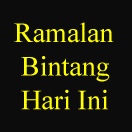A 475,000-square-mile (1,230,250-
km2) inland sea in eastern Canada. James Bay is a southern
embayment of Hudson Bay that extends along the
Ontario–Quebec border, and the bay extends northward to
the Foxe Channel, across which lie the Foxe basin and Baffin
Island. Hudson Strait connects the bay with the Atlantic
Ocean, whereas the Foxe Channel leads to the Arctic Ocean.
The bay is shallow and has numerous island groups such as
the Belcher Islands, and it is surrounded by a gently dipping
glacially leveled shield. Numerous raised beach terraces surround
the bay reflecting a rise in the land surface caused by
release of stresses from the weight of the glaciers, which only
geologically recently retreated from the region. Hudson Bay
is located on the sparsely populated Canadian shield, and the
tree line, north of which no significant stands of trees can
grow, cuts diagonally across the southwest side of the bay.
Hudson Bay used to be ice-free from middle July
through October. However, a series of dams has been built in
Canada along rivers that flow into Hudson Bay, and these
dams are used to generate clean hydroelectric energy. The
problem that has arisen is that these dammed rivers have
annual spring floods, which before the dams were built
would flush the pack ice out of Hudson Bay. Since the dams
have been built, the annual spring floods are diminished,
resulting in the pack ice remaining on the bay through the
short summer. This has drastically changed the summer season
on the Ungava peninsula. As the warm summer winds
blow across the ice they pick up cool moist air, and cold fogs
now blow across the Ungava all summer. This has drastically
changed the local climate and has hindered growth and development
of the region.
Hudson Bay was named by Henry Hudson in 1610 during
his explorations of the area in his search for a northwest
passage from the Atlantic to the Pacific. The region was
inhabited by French fur trappers, but France gave up its
claims to the region in 1713. Hudson’s Bay company was
founded in 1670 as a group of trading posts at river mouths,
and it survives to this day.

















Tidak ada komentar:
Posting Komentar
Catatan: Hanya anggota dari blog ini yang dapat mengirim komentar.